Early the next morning (March 24, 2014), Ryan and I headed down to the Bicheno jetty for an early-morning glass-bottom boat tour.
There are no coral reefs here. Instead, the boat sails out over the kelp forests in the channel between the jetty and two large islands not far offshore.
As with any glass-bottom boat trip, our view could not match what a diver would see (and taking photographs through the glass, even after a lot of colour correction and white balancing, produced far from ideal results). Nonetheless Ryan was delighted, and I was fascinated with the richness of the ecosystem below us.
Our almost immediate companions were schools of mullet swarming about just under the hull. I believe these to be Yellow-eye Mullet (Aldrichetta forsteri); they had yellow eyes, anyway.
The only member of its genus, the Yellow-eye Mullet ranges from the Chatham Islands east of New Zealand to the cooler waters of Australia, where it is the commonest mullet species (so I'm reasonably confident in my identification).
The mullets were a near-constant presence, except when we skimmed over kelp beds where the algal fronds rose almost to the surface.
Most of the forest consisted of great blades of kelp (Macrocystis sp) washing back and forth in the current.
This, I think, is a Senator or Patrician Wrasse (Pictilabrus laticlavius), a fish endemic to temperate Australian waters. If so it is probably a juvenile, or initial-phase, male. Wrasses - both males and females - can transform, when they rise to the top of their local dominance heirarchy and take over territories, into terminal males, usually very different-looking from their younger selves. Terminal male Senator Wrasses develop a broad, forked purplish stripe along the body, rather like the purple stripe on the border of a Roman senator's toga (hence, I presume, the name).
The terminal male Blue-throated Wrasse (Notolabrus tetricus), with its yellow fins and broad white band across the middle of the body, is easy to identify (and was one of the most striking fishes we encountered). Blue-throated Wrasses are carnivores, eating molluscs (such as abalone) and crabs or other crustaceans. They, in their turn, may end up on Australian restaurant tables.
A barely presentable photo, I admit, but Shaw's Cowfish (Aracana aurita) is such a weird-looking creature that I couldn't resist including it. There is a much better photo (with lots of info) here. It prefers deep water, apparently, so perhaps we were lucky to see it.
We saw two species of stingray, much to Ryan's delight. The Banded or Crossback Stingaree (Urolophus cruciatus), a southeastern Australian endemic, is common in Tasmania, where it can sometimes be seen in large numbers. Not many rays have patterns as striking as this one.
Compare, for example, this Smooth Stingray (Dasyatis brevicaudata), a species that ranges from New Zealand to South Africa. It males up for its lack of pattern by size: it can grow to more than two metres across.
We even came across a few Draughtboard Sharks (Cephaloscyllium laticeps), harmless, peculiar fishes that can swell up by swallowing water (this and its relatives are commonly known as swell sharks).
Sixty kilometres to the north - after Ryan and I had disembarked from our cruise, picked up Eileen and continued on our circuit of the island - we stopped at a shell-covered beach between the little resort towns of Scamander and Beaumaris, where a little hook-shaped peninsula jutted into the sea.
The kelp forest was still with us, this time in the form of long, fleshy skeins of beach-washed algae - a testimony to the ecosystem just offshore.
Compare these photos with the glass-bottom boat shots above - you can see that we are dipping into the same ecosystem (or its remains).
There has been some concern that the kelp forests of Tasmania are diminishing. However, kelp populations are subject to wide natural fluctuations, so how real the threat is can be difficult to tell. Certainly, though, one would hate to think that such a rich ecosystem could be reduced, one day, to withering fronds on a beach.
Meanwhile, there were other things to explore: tidal pools, rocks along the shore...
....and other rocks projecting above the waves.
Mussels and rock barnacles crammed themselves into cracks in the rock...
...while schools of tiny fishes swarmed in the shallows.
While Ryan explored the beach, I camera-stalked a Pacific Gull (Larus pacificus) posing against the sea spray.
This is, I think, one of the most magnificent of gulls; the enormous beak has a lot to do with it. It is probably adapted to crush mollusks, but it gives the bird a certain air of authority (well, I think so).
It's a striking bird, though, even if its bill isn't showing. Notice the black band across the tail (missing in Australia's other black-backed gull, the Kelp Gull (Larus dominicanus).
Ryan, meanwhile, was busy picking over the mounds of shells on the tideline.
Among the beach-washed shells, he found Anemone Cones (Conus anemone)...
...bleached valves of King Scallop (Pecten fumatus)...
...and zigzag-banded Wavy Turbans (Lunella undulata) in various stages of preservation.
Ryan was not the only shell collector on the beach. This Wavy Turban has been taken over by a hermit crab, just visible as it peeps out of its new home.
From Beaumaris we turned inland for the drive to Launceston, our base for the next two nights. We made a few stops en route, at the Pyengana Dairy Farm where we sampled the local ice cream, and at Bridestowe, supposedly the largest lavender farm in the Southern Hemisphere...
...but there wasn't a lot of nature to explore aside from this little knot of Maned Geese, also known as Australian Wood Ducks (Chenonetta jubata) - common enough birds, and a good example of why the question 'What is the difference between a duck and a goose?' may not mean very much.
Our stop for the night, the Village Family Motor Inn, boasted a playground, and a nice view of the city. It also boasted a ravine, just below the playground, where Tasmanian Pademelons (Thylogale billardierii) emerged to forage at night. Ryan and I were able to end our long day, just before bed-time, by doing a little nocturnal kangaroo-watching. Not every city motel can offer that.


















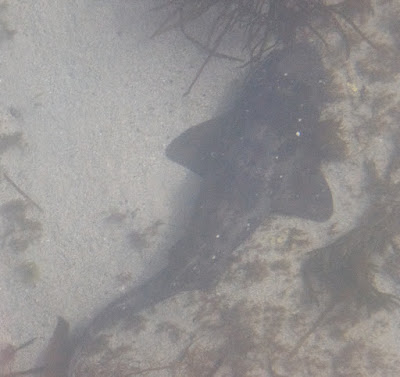

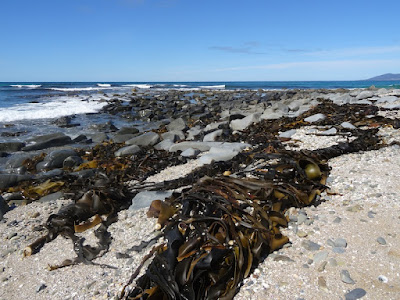




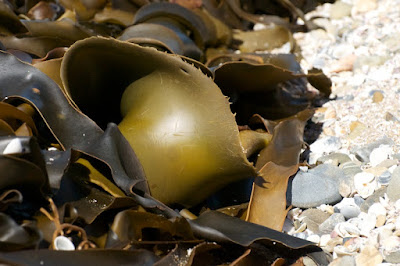








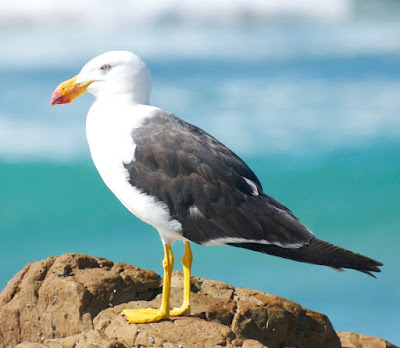
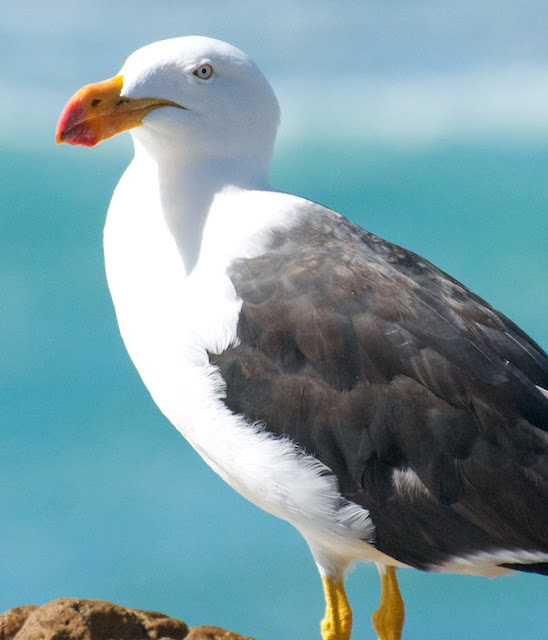


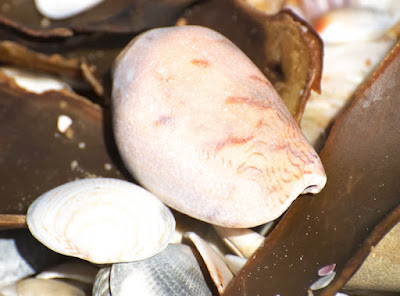





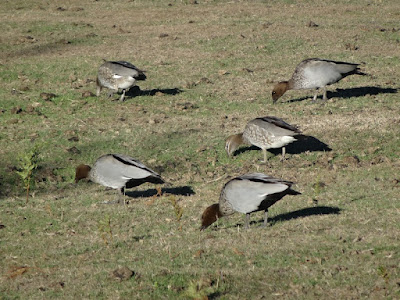


No comments:
Post a Comment